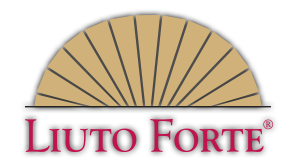Research
Craft and Science
Fertile collaboration with the Technical University Dresden has been of indispensable assistance over many years in the constant improvement in the sound quality of the Liuto forte. Students at the Technical University Dresden, Institute of Solid Mechanics under the direction of Prof. Rolf Schmidt analyse our instruments in the context of their verification work. Careful note is taken of the process of resonant vibration at the bridge, an essential factor for plucked stringed instruments, along with the influence of the barring on the frequency proportions of the soundboard.
The results of these investigations supply a valuable increase in knowledge concerning the fundamental functioning of lute instruments. They also contribute a better understanding of historical lute construction, as well as solving acoustic problems that can occur during the manufacture of the lute. The measurements made by the most modern apparatus in the laboratory can exponentially supplement the intuition and experience of our lute makers.
The following insightful visualisation of the vibration of the Liuto forte at various frequencies gives you a little insight into the results of this research.
An analysis undertaken in 1999 by the Zwota Institute for Musical Instrument Building (www.ifm-zwota.de) was able to show almost identical resonances (resonance peaks) in three individual liuti forti of the same model.
Below you can view the frequency response of one of these lutes (Liuto forte in d minor, Guenter Mark 1998) at various frequencies, and then compare it with the frequency response pattern of an historical lute in former possession of André Burguete (Sebastian Schelle, Nuremberg 1744).
Modal analysis Liuto forte15 string Liuto forte in d (double head), Günter Mark 1998 |
Modal analysis historical lute13 course Baroque lute, Sebastian Schelle, 1744, Germanisches Nationalmuseum Nürnberg |
| Liuto forte 107Hz | |
 |
|
| Liuto forte 258Hz | Historische Laute 269Hz |
 |
 |
| Liuto forte 368Hz | Historische Laute 318Hz |
 |
 |
| Liuto forte 421Hz | Historische Laute 433Hz |
 |
 |
| Liuto forte 610Hz | Historische Laute 673Hz |
 |
 |
| Liuto forte 710Hz | Historische Laute 796Hz |
 |
 |


